Occupational environment monitoring of a textile and garment manufacturing factory
99,000 ₫
Note: The above price is calculated for one sample, and the price may fluctuate depending on the area of the environment to be monitored and market movements. For more accurate pricing support, please refer to the price list or contact our consulting staff directly.
Monitoring the environment of a textile and garment manufacturing factory is a session of collecting, analyzing, and evaluating factors at the workplace that may harm workers health.
Table of Contents
Toggle1. Overview of Textile and Garment Factories
a. What is a Textile and Garment Factory?
A factory for textiles and garments is an industrial facility where raw materials such as fibers, synthetic fibers, or fabrics are transformed into textile and garment products such as fabrics, clothing, hats, underwear, footwear, and many other products.
Textile and garment factories usually have specialized equipment and machinery to carry out weaving and sewing processes. The process includes fabric production from fibers, processing, cutting and sewing, finishing, and quality control of the final products.
Textile and garment factories can organize large-scale production and are capable of producing thousands of products in a short period.

b. Production Stages in a Textile and Garment Factory
Production stages in a textile and garment factory include:
- Material preparation: This stage involves purchasing raw materials such as fibers, synthetic fibers, fabrics, or finished products from suppliers. Materials are then quality-checked and prepared for use in subsequent production processes.
- Weaving: The weaving process transforms fibers into fabric by creating different patterns, densities, and structures. Modern weaving machines are often used to produce complex patterns and designs.
- Processing: After weaving, the fabric needs to be treated to remove impurities, increase softness, and provide special features. Processing may include washing, chemical treatment, dyeing, or printing images on fabric.
- Cutting and sewing: This stage involves cutting patterns from the processed fabric into individual parts of the final product, such as shirts, pants, skirts, hats, bags, etc., following pre-designed templates and models.
- Sewing: The cut fabric pieces are assembled using sewing machines to create the finished product. This stage includes stitching, joining pieces together, folding, attaching buttons, fasteners, and other details.
- Finishing: After sewing, products may undergo additional finishing steps such as softening, pressing, dyeing, or final printing. The finishing process produces products ready for packaging and delivery to customers.
- Quality inspection: Throughout production, quality checks are conducted to ensure the final product meets required standards. This can include fabric inspections and checks on the finished garments.

c. Machinery Used in Textile and Garment Factories
Textile and garment factories use various machines and equipment for production. Common machinery includes:
- Weaving machines: Used to create different patterns and designs by interlacing fibers. Types include rapier looms, shuttle looms, jacquard looms, twill looms, and handlooms.
- Dyeing and printing machines: Dyeing machines color the fabric using dyes. Printing machines apply images or patterns onto the fabric. Types of dyeing machines include fiber, fabric, and spray dyeing machines. Printing machines include digital and screen printing.
- Cutting machines: Used to cut patterns from woven fabric into individual parts. Types include automatic cutting machines, laser cutting machines, and blade cutting machines.
- Sewing machines: Automated sewing machines join fabric pieces precisely. Types include industrial sewing machines, overlock machines, automatic sewing machines, and serger machines.
- Finishing machines: Include pressing machines, steam presses, and other finishing equipment to soften, flatten, and finalize textile and garment products after sewing.

d. Occupational Diseases in Textile and Garment Factories
Workers in textile and garment factories may face some occupational diseases such as:
- Respiratory diseases: Exposure to fiber dust, chemicals, and emissions from production processes may cause respiratory issues such as pneumonia, asthma, and related conditions.
- Skin problems: Contact with chemicals, dyes, and bleaches can irritate the skin, causing itching, redness, inflammation, or allergic reactions.
- Spinal and joint disorders: Repetitive movements like cutting, sewing, or prolonged standing can lead to back, spinal, and joint issues such as spinal degeneration, knee problems, and wrist or back pain.
- Eye problems: Working in low-light conditions, focusing on small details, and long hours may lead to eye strain, fatigue, and vision problems.
- Occupational accidents: Factories contain machinery and equipment with accident risks, such as cutting machines, dyeing machines, looms, and sharp tools.
To reduce occupational disease risks, factories must comply with labor safety regulations, provide protective equipment, ensure proper ventilation, and offer occupational safety and health training.

e. Products of Textile and Garment Factories
Textile and garment factories produce a variety of products, including:
- Clothing: Shirts, T-shirts, jackets, sweaters, jeans, pants, shorts, skirts, evening dresses, office attire, and many other garments.
- Underwear: Includes bras, underwear, sleepwear, nightgowns, swimwear, and related products.
- Fashion accessories: Hats, scarves, gloves, ties, belts, and other accessories.
- Footwear: Sneakers, high heels, slip-ons, indoor shoes, beach sandals, and more.
- Workwear and protective gear: Work uniforms, reflective jackets, raincoats, helmets, gloves, masks, and protective glasses.
- Household items: Curtains, bedding sets, tablecloths, towels, and other fabric-based home products.
Note: This list is illustrative and does not cover all possible products of textile and garment factories.

2. Overview of Occupational Environment Monitoring Services
a. What is Occupational Environment Monitoring in Textile and Garment Factories?
Occupational environment monitoring (or workplace environment measurement) in textile and garment factories involves collecting, evaluating, and analyzing metrics of workplace environmental factors to take timely actions, reduce environmental harm to workers’ health, and prevent occupational diseases. Monitoring is mandatory for textile and garment factories.
Occupational environment monitoring plays a critical role in protecting and enhancing worker health, as employees are the main resource and directly contribute to the company’s profits. Workers exposed to hazards beyond safe limits risk health issues and occupational diseases.
REGISTER FOR OCCUPATIONAL ENVIRONMENT MONITORING SERVICE
b. Nam Viet’s Occupational Environment Monitoring Program
Nam Viet’s program is developed by monitoring engineers specializing in occupational safety and environmental protection. Using modern measurement methods, it monitors air, water, microclimate, physical factors, dust, and other workplace elements. This program ensures a safe working environment and protects workers’ health.
The program also helps research and develop solutions to improve workplace environment quality. With expert dedication and professionalism, Nam Viet’s exclusive monitoring program is a breakthrough in occupational safety and environmental management in Vietnam.

c. Standardization in Workplace Measurement Processes
Standardization ensures the accuracy and reliability of measurement results. Nam Viet uses recognized standards and procedures from Ho Chi Minh City Department of Health. This guarantees reliable data for evaluating and improving workplace conditions.
Standardized procedures ensure measurements are conducted by experienced monitoring professionals, allowing managers to trust the results for making informed decisions on worker health and environmental protection.
Applying standardized monitoring procedures demonstrates Nam Viet’s commitment to a safe and healthy working environment, contributing to occupational safety and environmental management in Vietnam.
d. Reporting Results for Textile and Garment Factories
Monitoring results follow Form 04, Appendix III of Decree 44/2016/ND-CP and are issued in two copies: one for the contracted factory and one kept by the monitoring organization.
Retention time follows legal regulations with no expiration.

e. Frequency of Workplace Monitoring According to Law
According to Clause 2, Article 18 of the Labor Safety and Hygiene Law 84/2015/QH13, employers must conduct occupational environment monitoring at least once a year.
f. Deadline for Submitting Monitoring Reports According to Law
Reports must be submitted before December 31 each year. Enterprises must submit reports to the local Department of Health where the factory or business has its headquarters and where workers are employed.
When technological processes change, or factories are upgraded, employers must update occupational hygiene records regarding new hazards requiring workplace monitoring.
g. Penalties for Violating Workplace Monitoring Regulations
According to Article 27 of Decree 12/2022/ND-CP dated 17/01/2022 on administrative penalties in labor, social insurance, and Vietnamese workers abroad:
- Clause 2: Fines of 2,000,000 – 5,000,000 VND for employers failing to disclose monitoring results and hazard assessments to employees.
- Clause 3: Fines of 20,000,000 – 40,000,000 VND for employers not conducting occupational environment monitoring to control health risks legally.
- Clause 4: Fines of 40,000,000 – 60,000,000 VND for employers colluding with monitoring organizations to falsify monitoring results without criminal liability.
3. Harmful Environmental Factors for Workers in Textile and Garment Factories
Workers in textile and garment factories may be exposed to various harmful environmental factors. Below are some key environmental factors that may affect workers’ health:
- Dust and particles: The production process in textile and garment factories can generate dust and particles from fibers, fabrics, and other materials. Inhaling this dust and particles may cause respiratory irritation, pneumonia, and other health issues.
- Chemicals: Textile and garment production often uses dyes, bleaching agents, additives, and other chemicals. Exposure to these chemicals can cause skin irritation, dermatitis, allergies, and other health problems.
- Noise: Machinery and equipment in textile and garment factories can produce high levels of noise, especially during weaving and sewing. Continuous noise exposure may lead to sleep deprivation, fatigue, stress, and hearing damage.
- Lighting: Working environments in textile and garment factories often have insufficient lighting. This can cause eye strain, fatigue, difficulty concentrating, and affect workers’ vision.
- Temperature and humidity: Textile and garment factories may have hot and humid working conditions, especially during dyeing and ironing. Inappropriate temperature and humidity may cause discomfort, fatigue, and dehydration.
- Occupational accidents: Textile and garment factories may contain movable machinery and equipment, such as sewing machines, dyeing machines, and weaving machines, which may cause accidents if safety regulations are not followed.
REGISTER FOR OCCUPATIONAL ENVIRONMENT MONITORING SERVICE
4. Measures to Improve the Working Environment in Textile and Garment Factories
To improve the working environment in textile and garment factories and protect workers’ health, the following measures can be applied:
- Ensure ventilation and air conditioning: Provide an efficient ventilation system to reduce dust, chemical fumes, and odors in the workspace. Use air conditioning systems to control temperature and humidity in the factory.
- Provide protective equipment: Ensure that workers are supplied with personal protective equipment such as masks, gloves, safety glasses, and helmets to protect against direct contact with chemicals, dust, and other harmful factors.
- Training and education: Train workers on safe working procedures, use of protective equipment, and awareness of potential hazards in the workplace. Provide occupational health and safety information so workers can protect themselves.
- Regular inspection and maintenance of equipment: Perform regular inspections and maintenance of machinery and equipment to ensure they operate efficiently and safely. Repair or replace faulty components to reduce the risk of accidents.
- Enhance workplace hygiene: Ensure proper workplace hygiene by keeping the area clean, including personal hygiene and environmental sanitation. Provide hygiene facilities such as soap, handwashing water, toilets, and appropriate contact areas.
- Organize and manage work: Optimize workflows, assign work appropriately, and enhance safety management to reduce the risk of accidents and work-related stress.
- Periodically conduct occupational environment monitoring in factories, collect and analyze harmful factors for workers, and adjust to reduce risks to prevent occupational diseases for them.
5. Benefits of Periodic Monitoring in Textile and Garment Factories
An Toan Nam Viet provides excellent benefits for businesses using occupational environment monitoring services in accordance with Decree 44/2016/ND-CP on managing and controlling harmful factors in the working environment affecting employees.
- Businesses can proactively control harmful factors in workshops or factories.
- Receive advice and recommendations to minimize harmful factors and improve workplace quality.
- Indirectly protect human resources, the key factor in the enterprise’s development.
- Reduce the impact of occupational diseases on health, thus minimizing future treatment costs.
- Enhance workers’ health, ensuring product quality and production output.
- Comply with labor safety regulations, avoiding legal risks.
- Build reputation and professionalism in all aspects, enhancing the enterprise’s brand.
The occupational environment monitoring service of Nam Viet is a solution to reduce the harm of occupational diseases, contributing to a clean and quality working environment.

6. National Occupational Environment Monitoring Center
Occupational Environment Monitoring Center of Nam Viet is a professional unit specializing in monitoring and measuring the quality of the working environment throughout all provinces in Vietnam. With an experienced team of monitoring specialists, the center uses modern measuring devices, ensuring accuracy and reliability.
Besides providing monitoring services, the center also supports clients in planning, handling, and tracking occupational environment issues. With the motto “customer-centric”, the center focuses on customer satisfaction, meeting all client needs, and committing to offering the best solutions for businesses.
REGISTER FOR OCCUPATIONAL ENVIRONMENT MONITORING SERVICE
With investments in technology, equipment, and human resources, Nam Viet’s monitoring center has become one of the reputable units in occupational environment monitoring in Ho Chi Minh City with the following goals:
- We always value brand reputation and the quality of our service products.
- We provide clients with the best and most suitable solutions.
- With a team of experienced Masters and Engineers aiming to protect the environment and benefit enterprises.
- By choosing Nam Viet’s Environmental Monitoring team, your company will receive professional service from experts in the monitoring field and the best cost incentives.
The occupational environment monitoring process at Nam Viet includes the following basic steps:
- Before performing occupational environment monitoring, our company ensures all machines and equipment used for monitoring are calibrated and adjusted according to legal regulations.
- Carry out the monitoring process fully and accurately as committed to the Department of Health.
- Honestly report the monitoring results to the employer.
- If the monitoring results indicate unsafe conditions for workers, Nam Viet will support solutions, and the workplace will implement as follows:
- Implement measures to improve working conditions to minimize harmful effects and prevent occupational diseases.
- Organize health check-ups to detect occupational and related diseases early for workers in unsafe positions.
- Provide material compensation to workers according to labor law.

7. Occupational Environment Monitoring Pricing
To help businesses carry out occupational environment monitoring professionally and efficiently, Nam Viet provides clients with a price list for occupational environment monitoring services that is high-quality and reasonably priced.
- Our pricing provides detailed information on the cost of the monitoring services we offer, including costs for travel, measurement, analysis, and reporting. Clients can be assured of the accuracy and reliability of the monitoring reports we provide.
- We commit to offering the most competitive and reasonable prices on the market, and we are always ready to consult and answer any questions about monitoring services promptly and professionally.
- With Nam Viet’s monitoring pricing, clients can easily choose service packages that suit their needs. We promise to provide the highest satisfaction with professional service quality.
1 review for Occupational environment monitoring of a textile and garment manufacturing factory
No comments yet


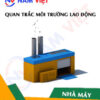
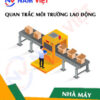
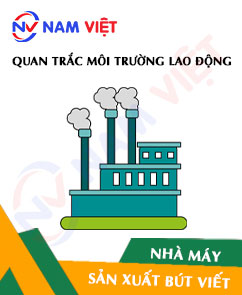
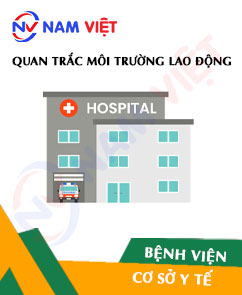



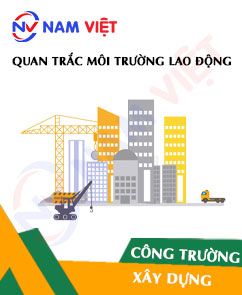

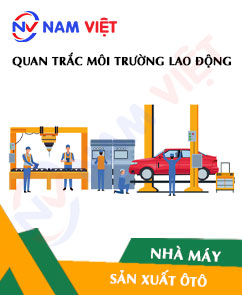
maituyet.cuong12
Good labor environment monitoring service!